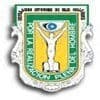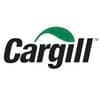Enfriamiento durante el periodo seco y su efecto en frecuencia respiratoria y temperatura rectal de vacas holstein bajo estrés calórico
Se determinó el efecto de enfriar vacas Holstein 60 días antes del parto sobre frecuencia respiratoria (FR) y temperatura rectal (TR) bajo condiciones cálidas. Se utilizaron 26 vacas Holstein multíparas en periodo seco durante julio y agosto; se agruparon en dos tratamientos: 1) Enfriamiento (n=14) y 2) Testigo(n=12). Se midió la FR y TR por la mañana y tarde. El índice temperatura-humedad (ITH) promedio fue 79 unidades. La FR fue mayor (P ˂0.01) en el grupo testigo en la mañana y tarde, sin embargo, la TR de vacas con enfriamiento fue mayor (P ˂0.05) que las testigo durante la mañana, pero en la tarde fue similar. Se concluye que el enfriamiento fue parcialmente efectivo para reducir el estrés calórico de vacas en su periodo seco.

Avendaño-Reyes, L.; Álvarez, V. F.D.; Correa, C. A.; Saucedo, Q. J.S.; Rivera, A. F.; Verdugo, Z. F.J.; Aréchiga, F. C.F. y Robinson, P. H. (2007). Evaluación de un sistema de enfriamiento aplicado en el periodo seco de ganado lechero durante el verano. Tec. Pec. Méx., 45(2): 209-225.
Avendaño-Reyes, L.; Álvarez, V. F.D.; Correa, C. A.; Fadel, J.; and Robinson, P. H. (2009). Is soaking cows during dry period an effective management tool to reduce heat stress and improve postpartum productivity? J. Applied Anim. Res., 34: 97-100.
Baumgard, L. H. and Rhoads Jr. R. P. (2013). Effects of heat stress on postabsorptive metabolism and energetics. Annu. Rev. Anim. Biosci., 1(7): 1-27. DOI: 10.1146/annurev-animal-031412-103644.
Blackshaw, B. C.; Blackshaw, E. (1994). Heat stress abatement during the dry period influences metabolic gene expression and improves immune status in the transition period of dairy cows. J. Dairy Sci., 94: 86–96.
do Amaral, B. C.; Connor, E. E., Tao, S.; Hayen, M. J.; Bubolz, J. W. and Dahl, G. E. (2011). Heat stress abatement during the dry period influences metabolic gene expression and improves immune status in the transition period of dairy cows. J. Dairy Sci., 94: 86–96.
García, E. (2004). Modificaciones al sistema de clasificación climática de Köppen (para adaptarlo a las condiciones de la República Mexicana). 5° Edición México, D. F. Instituto de Geografía, Universidad Nacional Autónoma de México.
Hahn, G.L., Parkhurst, A.M., Gaughan, J.B. (1997 ). Cattle respiration rate as a function of ambient temperature. Proceed Mid-Central Amer Soc Engineers Conf. St. Joseph MI, USA. ASAE: Paper No. MC97-103. 1997.
Toledo, I. M.; Fabris, T. F.; Tao, S. and G. E. Dahl (2020). When do dry cows get heat stressed? Correlations of rectal temperature, respiration rate, and performance. JDS Communication. 1: 21–24.
Jackson, P. G.G. and Cockcroft, P. D. (2002). Clinical Examination of Farm Animals. 1st Edition. Blackwell Science Ltd Malden, USA, pp 1- 306.
Nardone, A.; Ronchi, B.; Lacetera, N.; Ranieri, M. S. and Bernabucci, U. (2010). Effects of climate changes on animal production and sustainability of livestock systems. Livest. Sci., 130: 57–69.
Tao, S.; Thompson, I. M.; Monteiro, A. P.; Hayen, M. J.; Young, L. J. and G. E. Dahl. (2012) Effect of cooling heatstressed dairy cows during the dry period on insulin response. J. Dairy Sci. 95:5035–5046.
Urdaz, J.H., Overton, M.W., Moore, D.A., Santos, J.A.P. (2006) Effects of adding spray and fans to a feedbunk sprinkler system for preparurient cows on health and performance. J. Dairy Sci. 89:2000-2006.












